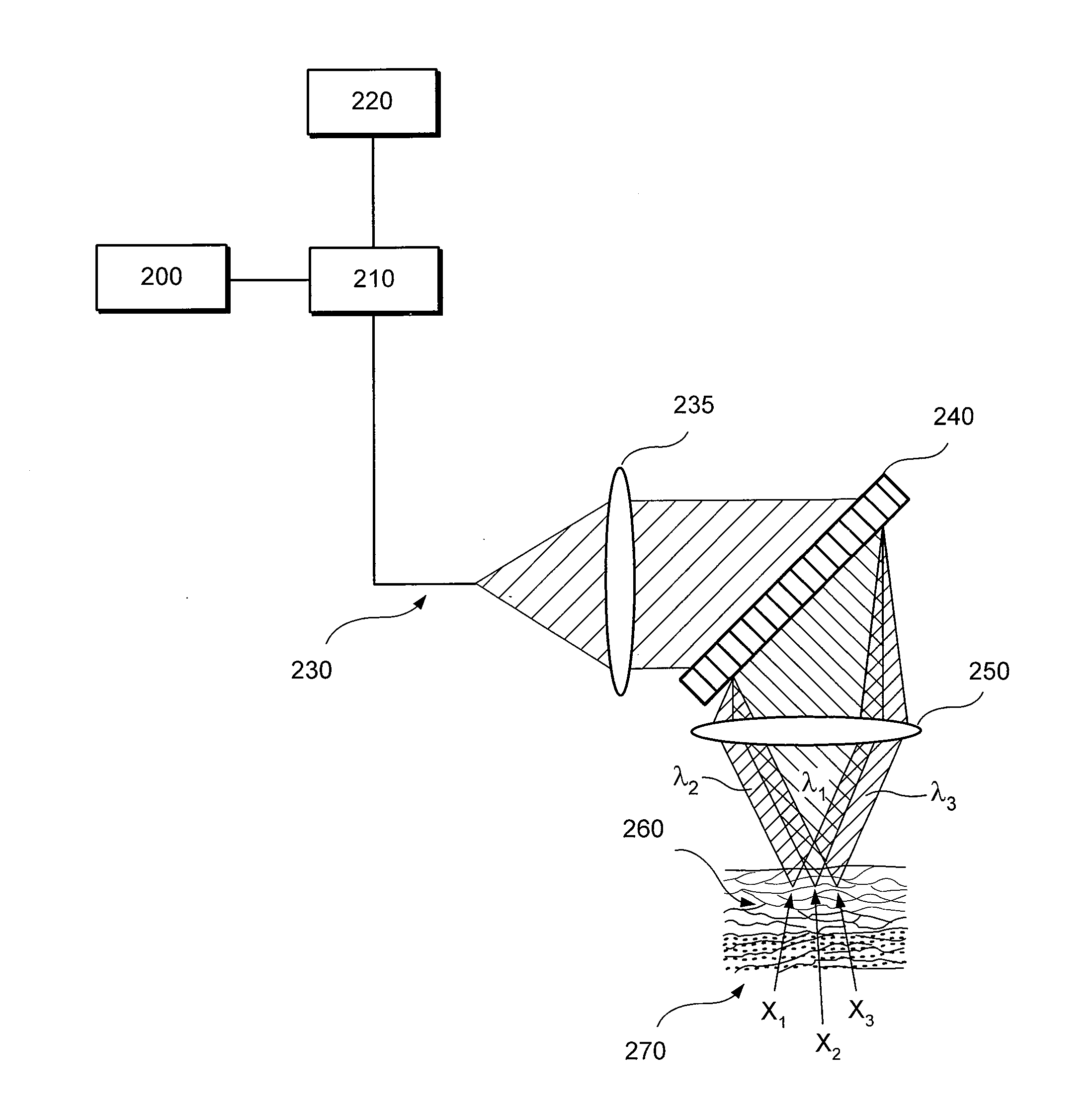Devices and methods for imaging particular cells including eosinophils
a technology for eosinophils and apparatuses, applied in the field of apparatus and methods for imaging particular cells, can solve the problems of putting a substantial financial burden on our health care system, time-consuming and frustrating for patients and their families, and eosinophilic inflammation may lead to significant and permanent damage, etc., to facilitate the placement of rcm probe optics, facilitate the scan, and facilitate the effect of rcm
- Summary
- Abstract
- Description
- Claims
- Application Information
AI Technical Summary
Benefits of technology
Problems solved by technology
Method used
Image
Examples
Embodiment Construction
[0024]According to one exemplary embodiment of the present disclosure, exemplary RCM techniques, methods and apparatus according to the present disclosure can be configured to identify esophageal eosinophils.
[0025]One of the objects of exemplary embodiments of the present disclosure is to determine the presence or absence of esophageal eosinophils in human patients. Another object of the present disclosure is to count, in a manual, semi-automatic, or computer processing manner, the number of eosinophils in human patients. A further object of the present disclosure is to obtain cross-sectional images of tissue at the cellular level to enable the counting of eosinophils. Another object of the exemplary embodiments of the present disclosure present disclosure is to identify other cells, such as leukocytes, including mast cells, lymphocytes, basophils, and neutrophils, that may also be elevated in EoE. A further object of the exemplary embodiments of the present disclosure present discl...
PUM
 Login to View More
Login to View More Abstract
Description
Claims
Application Information
 Login to View More
Login to View More - R&D
- Intellectual Property
- Life Sciences
- Materials
- Tech Scout
- Unparalleled Data Quality
- Higher Quality Content
- 60% Fewer Hallucinations
Browse by: Latest US Patents, China's latest patents, Technical Efficacy Thesaurus, Application Domain, Technology Topic, Popular Technical Reports.
© 2025 PatSnap. All rights reserved.Legal|Privacy policy|Modern Slavery Act Transparency Statement|Sitemap|About US| Contact US: help@patsnap.com



